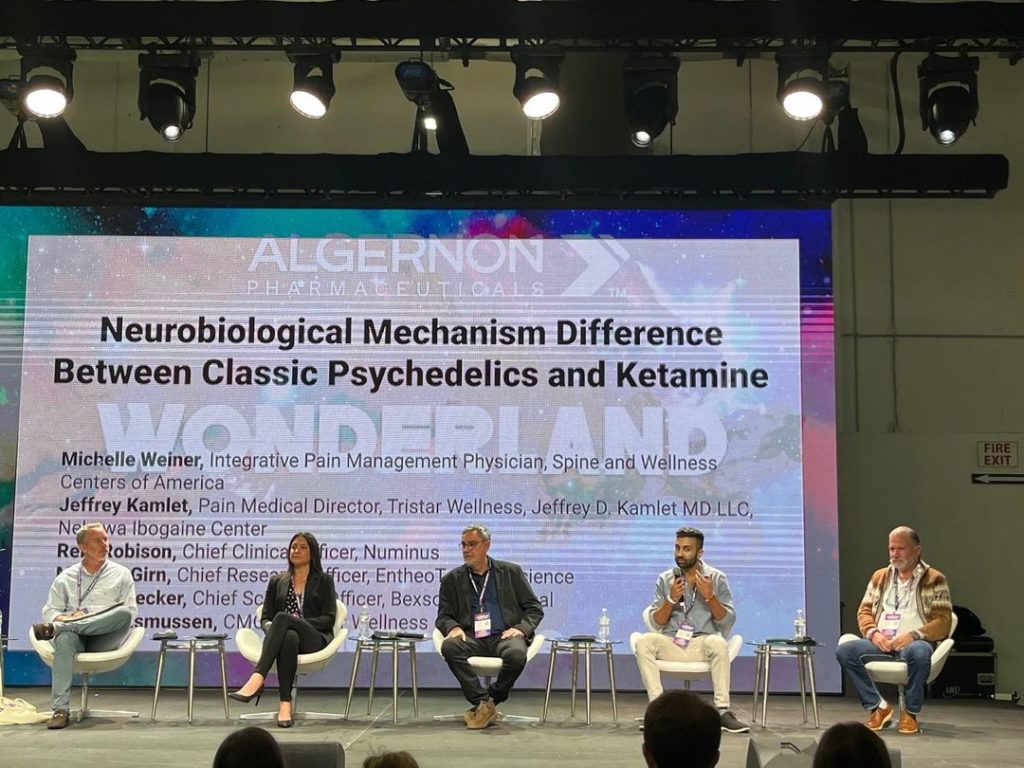As mentioned in previous blog posts, there are two very different approaches that doctors may take when administering ketamine for chronic pain or depression. One approach, which we can call the ‘biomedical approach’, is one in which the neurobiological effects of ketamine take centre stage and the psychological experience induced by ketamine is seen as an unimportant, negative side effect. According to this approach, ketamine works by increasing neuroplasticity and making physical changes in your brain that are independent of your particular ketamine experience and independent of your personal life history more generally.
The other approach is the ketamine-assisted psychotherapy (KAP) approach. According to KAP, the experience induced by ketamine is an integral aspect of the treatment. It’s seen as a potential source of psychological insight and clients are guided to focus on and explore the particular content that emerged during their session. This approach is highly person-centred: the client’s unique traits, characteristics, memories, and traumas are all relevant to the treatment.
This is the approach we uphold at the EntheoMed Ketamine Assisted Therapy Suite in Kelowna, BC. We conduct sessions in accordance with our KAP Odyssey model, a model designed based on the latest scientific perspectives to best leverage the ketamine experience to create lasting positive change.
Approaching your preparation with conscious care is essential for KAP. In what follows, we outline some suggestions for how to prepare for your first KAP session. These suggestions are written mainly for individuals seeking ketamine treatment for depression. However, even if you are seeking ketamine for chronic pain or a different condition, approaching your session in this way can go a long way in helping you have a more positive experience, with more lasting positive effects.
A great way to start your preparation is to journal and reflect on your goals for the treatment. What are you hoping to overcome or resolve? What would it look like for these things to be resolved, or for you to have a healthier relationship with them? It may also be helpful to reflect on the things that you think might be driving or contributing to your depression or other symptoms. What memories, thoughts, or emotions might they come up in your ketamine experience? How would you like to approach them if they do come up?
Based on your reflections, you can set your intention. Studies have provided evidence that people who have a more clear and specific intention experience greater positive benefits from psychedelic-assisted therapy¹. An intention is usually expressed as a single sentence such as “to be kinder to myself,” “to experience connection and love,” or “to rediscover myself.” It should be whatever truthfully resonates with you. This intention will be your anchor and guide throughout the experience, to remind yourself why you’re there and what you’re hoping to achieve. This can especially help you through any challenging experiences that might come up.
On the session day, make sure to eat lightly prior to the session and to scrupulously follow all of the guidelines provided by the clinic. It’s ideal to come into the session with a relaxed, well-rested, and calm headspace. Avoid coffee that morning, detox from other substances for at least a day or ideally more prior. Take some time to meditate and ground yourself — there are many available resources online to help with this. We also recommend that you are mindful of the content you consume — in terms of movies, TV shows, videos, or articles — in the days preceding your experience. All of these can show up in varying ways during your ketamine experience.
Importantly, be prepared to let go and trust the experience. An ability to surrender has also been found to predict positive psychedelic experiences¹. Hold your intention in mind, but don’t be tied to any particular outcome or expectation of what will happen during the experience. The experience will go how it wants to go, and it’s always better to float downstream than to try to swim against the current. Trust, surrender, and curiosity should be the pillars of your experience.
All in all, your ketamine experience shouldn’t be taken lightly, and the more you put in the time to carefully prepare and make a concrete plan for integration, the more lasting benefits you’re going to get.














